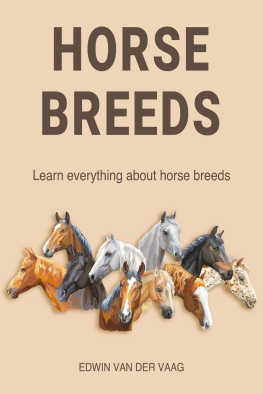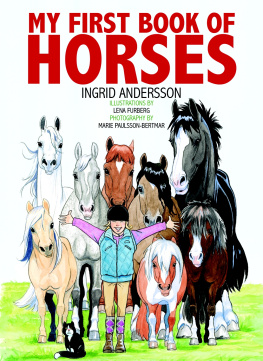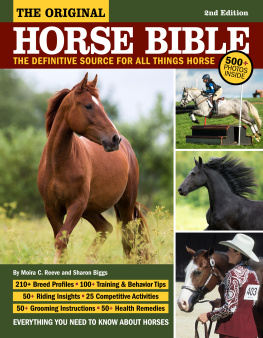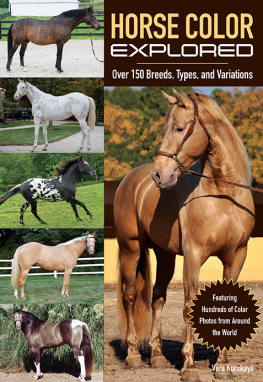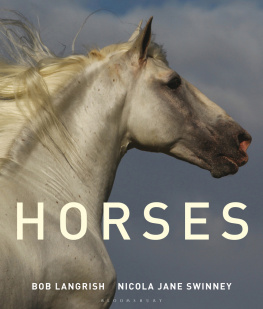Horse Breeds
Edwin Van Der Vaag
Published by Edwin Van Der Vaag, 2022.
While every precaution has been taken in the preparation of this book, the publisher assumes no responsibility for errors or omissions, or for damages resulting from the use of the information contained herein.
HORSE BREEDS
First edition. May 24, 2022.
Copyright 2022 Edwin Van Der Vaag.
Written by Edwin Van Der Vaag.
10 9 8 7 6 5 4 3 2 1
Horse Breeds
Learn everything about horse breeds
Edwin van der Vaag

Table of contents
I would like to welcome you to this comprehensive guide of horse and pony breeds. There are now a lot of different breeds, so it is not so easy to keep track. Maybe you have been interested in horses for a long time and would like to get a better overview of the different types of horses. Or you are looking for the right horse and don't really know which one would suit you.
Of course, as the parent of a horse-loving child, you may also want to read up a bit more on the subject. So, whatever your reasons for buying this book, it will give you a comprehensive overview of the world of horses and ponies. First of all, this guide will gently immerse you in the world of horse and pony breeds and provide you with basic knowledge about these animals. Thus, the first part of the book is mainly about the history of horses and how they were created in the first place. Furthermore, I give you an overview of the four main groups of horse breeds with the hand.
So you already learn to be able to roughly classify each horse. In addition, I want to teach you the difference between riding and working horse and steppe and mountain horse. After you are well prepared and have mastered the basics of the horse world, I will introduce you to a variety of different breeds. Here you will find a colorful mixture of warm, cold and thoroughbreds, but also ponies and small horses. To give you a very realistic cross-section of horse and pony breeds, I have not only summarized the most popular and well-known breeds, but also introduce you to exotic, special and endangered animal breeds.
B e curious, which great horse species await you here. I wish you a lot of fun while reading and I also recommend you to use this book as a reference book if you want to learn more about a certain breed in between. But now let's get to the guide and have fun!
Part 1: General knowledge horse
B efore we dedicate ourselves to the most popular or even most exciting horse and pony breeds, you should first acquire a sound general knowledge about the fascinating creature horse. No matter if you are looking for the right horse or if you want to deal with the different breeds in principle - it is always an advantage if you also know something about the history of the horse and you can therefore deduce many character traits or also physical characteristics of the respective breeds yourself. Additionally, not every horse is the same and the many horse breeds can be divided into various subgroups. I would like to introduce these to you in the general part of the book, so that you can keep the overview better. In the whole world there are more than 250 horse breeds - it is not always easy to keep track of them. But if you already know the difference between riding and working animals, warm and cold bloods and the like, it will be easier for you to distinguish between the individual horses and perhaps find the right horse for you. So let's start with the history of the horse breed and catapult us back thousands of years....
History of the horse breed
I magine that the great -great-great-great grandfather of today's horses lived 60 million years ago. Back then - in the time before humans - a rather small creature lived in the humid primeval forests, which we call Eohippus today. This creature grew to a height of only 35 cm and - in contrast to today's horses - also possessed toes. This animal resembled in appearance an antelope without horns and was not exactly larger or broader built than a fox or dog. Especially in North America very many fossils of this Eohippus were found, which is why one can assume that the area of origin of today's horses is located here.
Over the millennia, the Eohippus evolved more and more. He became larger and more robust and his legs also longer and longer. The toes gradually formed back, so that he had only three larger toes. The middle toe was the largest and it gradually developed into the hoof we know from our horses today. The other toes simply atrophied. Thus, the original horse also got more stability and became much faster. This speed was also necessary, because in the course of time the environment changed and the horse could ensure its survival by its faster gait. The first true equid was called Pliohippus . It was almost as big as today's horses and adapted well to the often meager living conditions of the grass steppes of that time. Until then, the prehistoric horse had rather fed on leaves. With the environmental changes it had to adapt however to the few existing grass and the life in the steppe. Its teeth changed, as did its brain and eyes, so that the horse could recognize enemies more quickly and escape.
About two million years ago, the Pliohippus had evolved into the so-called Plesihippus. This animal is considered today as a direct ancestor of the modern horses. According to scientific findings, four original types of horse breeds are said to have developed from it:
- The North Pony:
The original type of the northern pony was mainly native to northwestern Europe and had a height of about 120 cm. This pony had a very straight head with large nostrils. It needed these to warm the air it breathed sufficiently, as it was always extremely cold in its regions. Therefore, the northern pony was also a very strong and robust animal that could cope with damp and cold weather and meager food. Due to the very rough and rocky landscape, this type of pony had a high robustness as well as strong nerves as well as a perfect feed conversion. The northern pony always adapted to the weather conditions and therefore had no fixed territories. In addition, the northern pony was probably very tolerant of other creatures, because in a herd the warmth and protection was much more true than in isolation. The Exmoor pony known today would correspond to the type of the North pony at that time.

